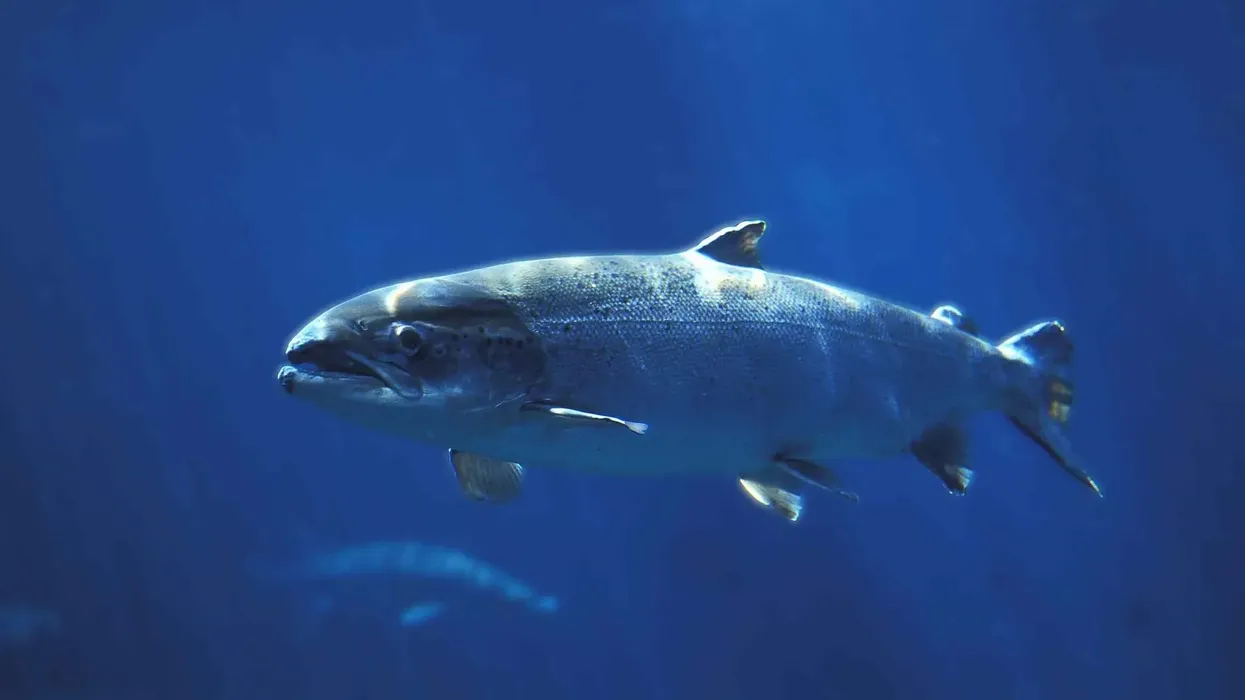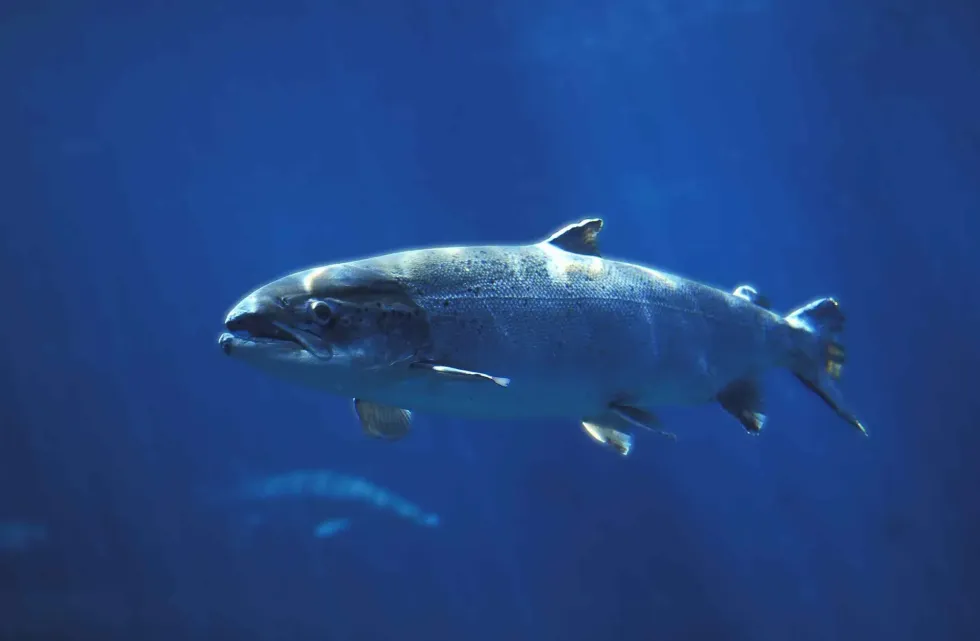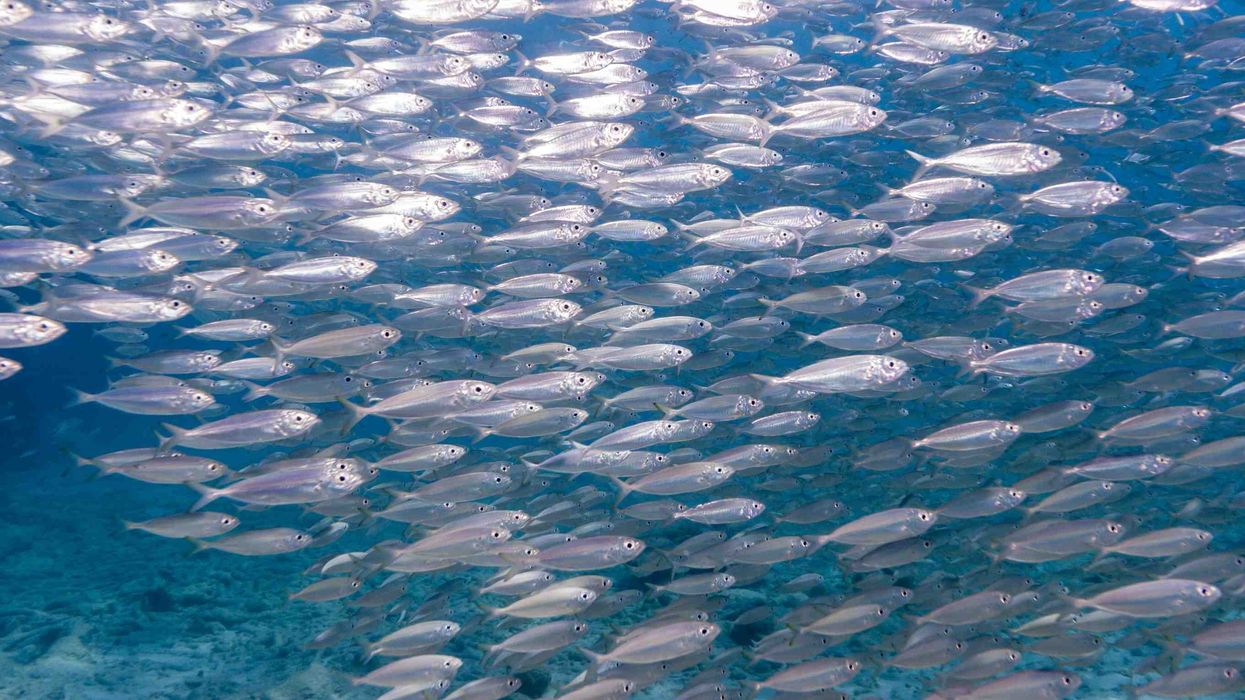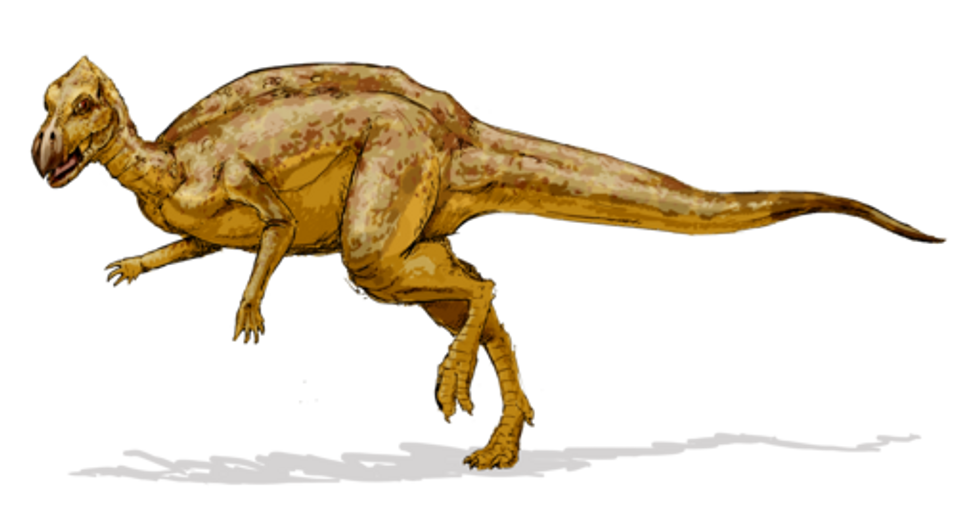Salmon are anadromous fishes, which means the adults return to their natal spawning ground and lay eggs in the freshwater stream.
After the young ones are born, the adults die.
The young ones then move to the sea and reside there for several years, where their body gains a lot of nutrients. When they reach their mating maturity they return back to the rivers in which they were born by trailing the scent of the freshwater.
These adult fishes are also called keystone species which means they bring a lot of nutrients from the sea during the spawning season and impact the river ecosystem to a great extent as a lot of animals and coastal plants including the decomposers benefit from them.
If you liked these true facts about salmon then you'll surely like these facts about rays and bull sharks too!
Salmon Interesting Facts
What type of animals are salmon?
Salmon are a type of ray-finned fish.
What class of animal do salmon belong to?
Salmon belong to the class of Actinopterygii to which ray-finned fishes belong to.
How many salmon are there in the world?
There are several different types of salmon in the world. There are seven species of Pacific Salmon; namely, pink salmon, Chinook salmon, sockeye salmon, coho salmon (also known as silver Salmon and jack Salmon), and chum salmon, which are found in North American waters, and masu and amago salmon are found in Asian waters.
Another type of salmon is the Atlantic salmon. The exact number of salmons in the world is not listed.
Where do salmon live?
Salmon live both in fresh water and in the ocean. Hence they are called anadromous (fish that migrate from time to time for reproductive purposes or other unlisted reasons).
They are usually born in freshwater but they soon migrate to the ocean after that. During reproduction, they are known to come back to freshwater. However, there are certain species of salmon that do not migrate and hence are only restricted to freshwater.
What is a salmon's habitat?
A salmon's habitat varies depending on the species. Different species of Pacific salmon are found in parts of North America.
Chinook salmon, also popularly known as king salmon's habitat in the United States. These large fishes are found in the area that stretches from Mackenzie River, Kugluktuk hamlet, which is located in the central Canadian Arctic and as far south as the Central California coast.
On the other hand, the fish chum Salmon can be found in rivers like Mackenzie River in Canada all the way to Sacramento River in South California. They are also found in the region of Lena River in Siberia to Kyushu Sea in Japan. Coho salmon are found in Mackenzie River, coastal waters of Alaska, and Monterey Bay.
Masu salmon are found in Japan, Korea, Russia, and Taiwan. Pink salmon are found in Siberia, Korea, Northern California, the Pacific Ocean and Canada.
The spawning ground for Atlantic salmon is in the rivers of Iceland, Europe, and Northwest Russia. After spawning the Atlantic salmon move to the Atlantic Ocean.
Who do salmon live with?
Salmon are social marine creatures. They reside in a group which is also known as school.
How long do salmon live?
The longevity of a salmon's life is species-specific. Atlantic salmon can live up to 13 years whereas pink salmon and masu salmon are only alive for around three years. Coho salmon and chum salmon live for about five and seven years respectively. Chinook and sockeye salmon live about eight or nine years.
How do they reproduce?
In every salmon species that exists, they reproduce through a process called spawning for which the adults come to the freshwater stream. In this process after the female lays eggs, the male salmons come and fertilize it outside her body.
The larger the female fish is, the more eggs she produces. After laying the eggs, she buries the eggs from which the young fish is born in the freshwater. Soon after the fish spawning process, the adults die.
What is their conservation status?
Salmon are not considered endangered. However certain species of salmon from specific areas have been filed as endangered.
Sockeye salmon residing in the Snake River for its freshwater stream is one of the most endangered salmon species in the world. Coho salmon living in the Colombia River are already considered extinct. However, the salmon population in Alaska and the Pacific region like Pacific salmon are considered to have a healthy population.
Salmon Fun Facts
What do salmon look like?

Coho salmon, also known as silver salmon, are best known for their silver scales. They have red flesh.
Chinook salmon, also known as king salmon, can range in the color white to bright red. Pink salmon look somewhat similar to other Pacific salmon. They can be distinguished from the rest of the lot by the spots on their back.
When pink salmon are in the sea they can range from colors between steel blue and blue-green back, silver sides, and a prominent white belly. In the case of masu salmon, the color of their back becomes darkened when they reach the age of sexual maturity. Atlantic salmon have black spots on their gills.
Some of them also have these markings on their tail fins. Atlantic salmon are known to have lesser anal fin rays than Pacific salmon.
How cute are they?
Both Pacific salmon and Atlantic salmon are very elegant to look at. Atlantic salmon are extremely graceful.
Its sharp and distinct features make them easily recognizable. Among the Pacific salmon, sockeye salmon has shimmering golden eyes which are much larger than any other salmons and make them look extremely adorable and cute. The pinkish shade and dark spots make pink salmon very pleasing and pretty to look at.
How do they communicate?
Salmon use darkening of their skin as a form of communication with each other. By lightening its skin color, a Salmon declares to its opponent that it is submissive in nature and prevents the other fish from further attacks. Salmon is also known to communicate by chemical signals. This type of communication is both inter and intraspecific.
How big are salmon?
Chinook salmon, also known as king salmon fish is the biggest of the lot, while Atlantic salmon comes second followed by coho and chum salmon. While Sockeye salmon comes at the end with one of the smallest sizes. Atlantic salmon are twice the size of sockeye fish.
How fast can salmon swim?
The speed of a salmon depends on the water current. A coho salmon can swim at speeds of 0.8-2.2 mph (1.3-3.5 kph) They are extremely fast swimmers and can jump around 144 inc (3.7m) during migration. Pink salmon can go up to a speed of 2.5 mph (4kph) while swimming.
How much do salmon weigh?
The weight of a salmon varies depending on its various species. The heaviest Chinook Salmon weighs around 135 lb (61.4 kg) and is the heaviest species of all. On the other hand, Pink Salmon can weigh around 14.9 lb (6.8 kg). Sockeye Salmon can weigh around 17 lb (7.7 kg).
What are their male and female names of the species?
There are no specific terms assigned to male and female Salmon.
What would you call a baby salmon?
A newborn salmon baby is popularly called an alevin.
What do they eat?
Salmon are carnivores. They usually have food that has high protein content. Wild salmon have been observed eating small invertebrates and zooplankton. Adult salmon can also have small fishes and krill. When salmon are farmed, they are fed small sea creatures and fishes.
Are they eaten by humans?
Salmon is one of the most popularly consumed fishes in the world. A lot of people even eat salmon skin since it is known to be beneficial for health. Salmon nutrition is extremely high and delectable.
Not only it is an excellent source of protein but also provides omega 3 fatty acids. It is also rich in vitamin B and vitamin D and contains minerals like niacin and phosphorus.
These fishes are known to reduce the chances of heart diseases. Pacific salmon are the healthiest of them all. It is advisable to cook these fish in pre-heated ovens.
Would they make a good pet?
Salmon are not advisable to be kept as pets. They migrate from rivers with fresh water to the sea after they are born and spend years at sea. Salmon return to the rivers during reproduction.
This makes their life cycle too complicated for them to be kept as pets. Not only that, but salmons' food habits are also complicated and it isn't feasible for them to be kept as pets.
They also need a specific temperature for survival which is hard to maintain in an aquarium. There are also certain game laws in different countries that forbid people to keep salmon as a pet. However other species of fish, like trout, can be successfully kept as pets.
Did you know...
Salmon fishing is considered a kind of recreational sport. However, commercial fishing is restricted in the ocean since it makes it difficult for the adult salmon family to return back to their natal spawning grounds, i.e., freshwater rivers. There are also issues regarding the salmon stock resources between commercial fishing and recreational fishing.
Atlantic salmon have been so extensively hunted that there is no such salmon left in the wild. Now there are only farm-raised salmon left in fisheries that are raised in net cages.
Wild Alaskan salmon hunt constitutes more than 80% of the total number of salmon caught which is the largest in North America from Canada and the Pacific Northwest. It is run by salmon fisheries in Alaska where they harvest many types of Pacific salmon.
Sockeye salmon is also popularly called Kokanee salmon or red salmon.
In salmon farming, the fish is fed processed food and they are also kept under medication to prevent diseases like sea lice.
Do salmon have a good sense of smell?
Salmon have an excellent sense of smell. The species of Salmon return to their natal freshwater river stream from the sea during migration, at the time of reproduction.
Different species of salmon can also smell and differentiate different tributaries of the main river while they come home.
They are also capable of distinguishing the two different species of themselves based on their sense of smell. Atlantic salmon have such excellent olfactory senses that they can are able to point out one drop of scent in an area that has water quantity equal to ten Olympic-sized swimming pools.
Why are salmon a 'keystone species'?
Salmon are considered a keystone species since they have a great impact on the ecosystem, i.e., a lot of other animals are dependent on this species. The fish is also responsible for maintaining biodiversity.
When salmon leave their natal ground and go to the ocean, the body of the salmon gets rich in nutrients. During reproduction, when adult salmon come back to the freshwater spawning grounds, they carry a lot of nutrients in their body which they carry from the sea.
This greatly impacts the freshwater ecosystem as a lot of organisms in the rivers benefit from those nutrients.
Thus the spawning season proves extremely beneficial for the entire ecosystem. Not only the animals who feed on Salmons benefit from it but also the decomposers who feed on the dead salmons and the coastal trees and animals residing in that area.
Here at Kidadl, we have carefully created lots of interesting family-friendly animal facts for everyone to discover! Learn more about some other fish including the silver dollar and the Siamese fighting fish.
You can even occupy yourself at home by drawing one of our king salmon coloring pages.









